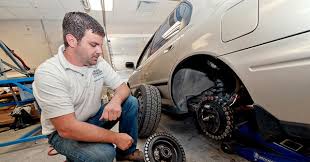
Breaking News
 Interview 1991 - The Origins of the Philosophy of Liberty with Ken Schoolland
Interview 1991 - The Origins of the Philosophy of Liberty with Ken Schoolland
 Silversqueeze: How We Got Here, Where We're Going
Silversqueeze: How We Got Here, Where We're Going
 I asked Grok for Its Opinion on "Grok vs ChatGPT, Which Is Better?"
I asked Grok for Its Opinion on "Grok vs ChatGPT, Which Is Better?"
 You'll own NOTHING and be happy?
You'll own NOTHING and be happy?
Top Tech News
 Build a Greenhouse HEATER that Lasts 10-15 DAYS!
Build a Greenhouse HEATER that Lasts 10-15 DAYS!
 Look at the genius idea he came up with using this tank that nobody wanted
Look at the genius idea he came up with using this tank that nobody wanted
 Latest Comet 3I Atlas Anomolies Like the Impossible 600,000 Mile Long Sunward Tail
Latest Comet 3I Atlas Anomolies Like the Impossible 600,000 Mile Long Sunward Tail
 Tesla Just Opened Its Biggest Supercharger Station Ever--And It's Powered By Solar And Batteries
Tesla Just Opened Its Biggest Supercharger Station Ever--And It's Powered By Solar And Batteries
 Your body already knows how to regrow limbs. We just haven't figured out how to turn it on yet.
Your body already knows how to regrow limbs. We just haven't figured out how to turn it on yet.
 We've wiretapped the gut-brain hotline to decode signals driving disease
We've wiretapped the gut-brain hotline to decode signals driving disease
 3D-printable concrete alternative hardens in three days, not four weeks
3D-printable concrete alternative hardens in three days, not four weeks
 Could satellite-beaming planes and airships make SpaceX's Starlink obsolete?
Could satellite-beaming planes and airships make SpaceX's Starlink obsolete?
Turn Your Car Into a Plug-In Hybrid for $3,000

After five years of research, students at the University of Middle Tennessee have installed a full plug-in hybrid kit in a stock 1994 Honda Accord. The setup gives between 50 and 100 percent better gas mileage with two electric motors delivering power directly to the rear wheels, leaving the engine-powered front wheels to work with little effort. The price of all the parts comes to about $3,000 and can be applied to almost any car.
Energy for the motors comes from a lithium ion phosphate battery that sits in the trunk. The battery in the research vehicle is big and ugly so it can easily transmit data, but the production version will be about "the size of a carry-on bag," said head researcher Professor Charles Perry.
The twin three-phase DC brushless motors sit in the empty interior around the rear brakes. They power the wheels directly, rather than going through the drive shaft like other hybrids. Each motor produces 200 pound-feet of torque. The setup has four patents pending, all of which will be owned by the university to fund future research.

 First totally synthetic human brain model has been realized
First totally synthetic human brain model has been realized Mach-23 potato gun to shoot satellites into space
Mach-23 potato gun to shoot satellites into space

